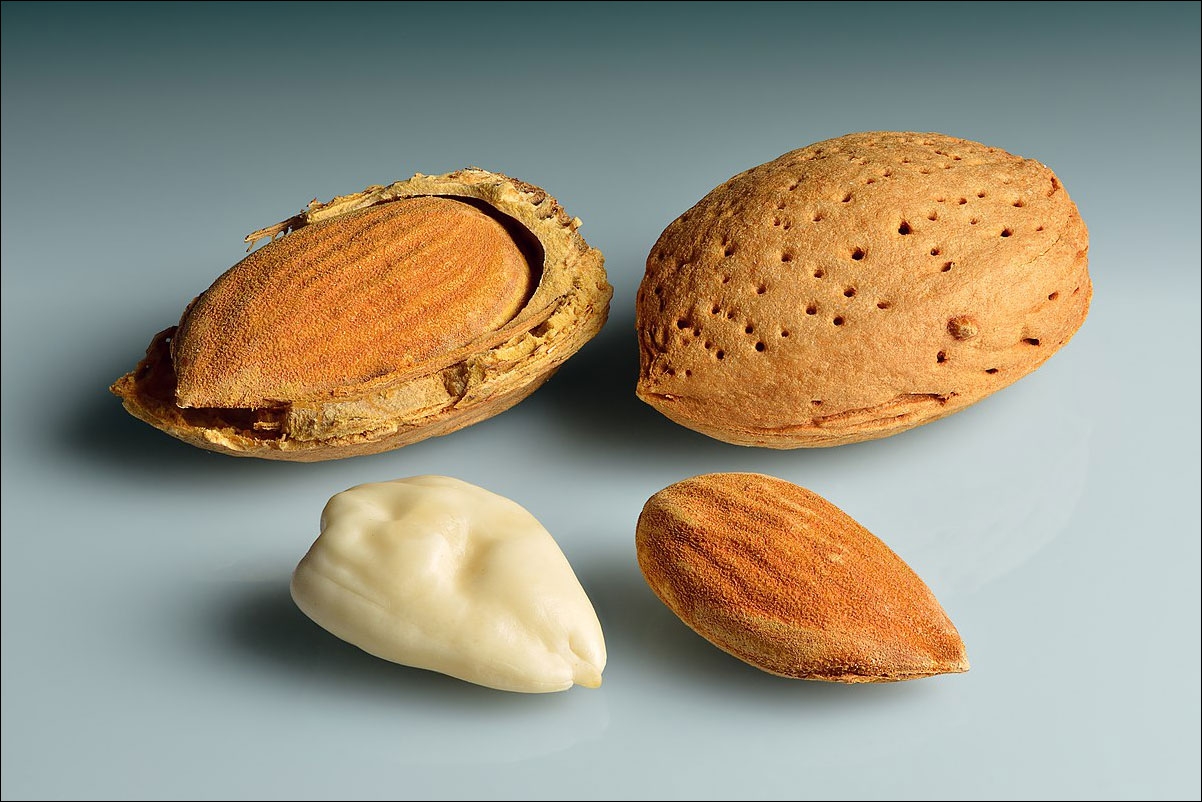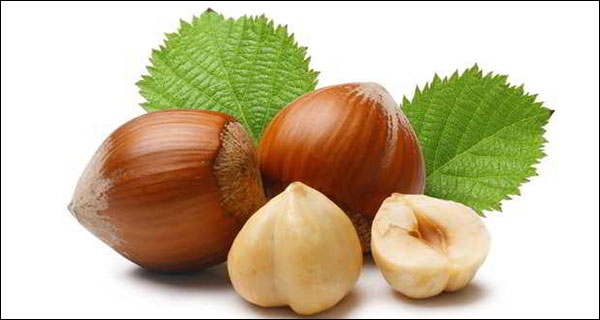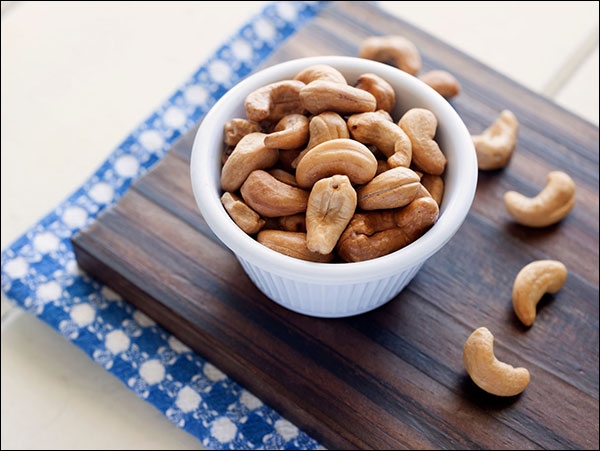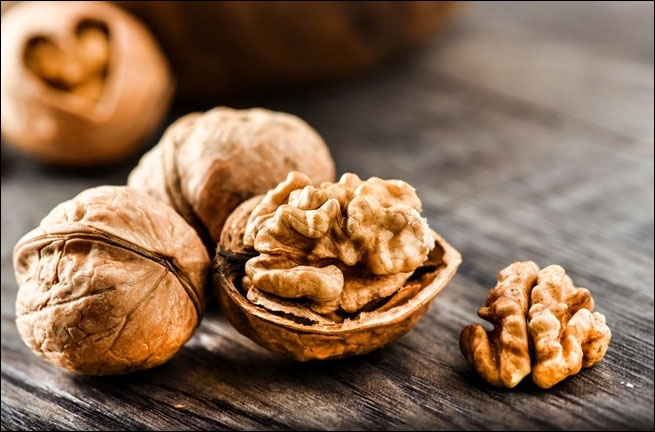Hazelnuts, pistachios, cashews, almonds, walnuts, or so-called walnuts. These types of nuts are considered among the most popular types of nuts spread in the world, and are included in many meals and daily foods. In addition to this, nuts of different types are distinguished by containing a large amount of healthy vitamins. Which bring many important benefits to a person’s psychological and physical health. Below we will learn about the most common types of nuts in the world, and the great benefits they give to humans.
Benefits of different types of nuts:
- Nuts do not contain high levels of vitamin C, and they are somewhat poor in vitamin A, but they are very rich in vitamin B and fatty acids that are beneficial to the human body, which help nourish cells.
- Nuts contain an abundant amount of calcium and iron, which is beneficial for bone and joint health.
- The fats found in nuts are beneficial fats, not harmful fats, meaning they provide benefit to the functions of the heart, liver, intestines, and all internal organs of the body, without causing excess obesity in humans.
- Nuts do not contain uric acids, which cause diseases in humans, specifically joint diseases .
- Nuts do not contain any type of harmful germs that are found in meat and chicken, and they also contain a high percentage of healthy albumin that is free of parasites.
- Nuts can be eaten raw or cooked, because they do not lose any nutritional value even after cooking.
- A person following a diet rich in nuts helps protect him from diseases of the liver, pancreas, circulatory system, and heart.
- Nuts help protect people from many serious diseases that are widespread nowadays, especially diabetes and breast cancer.
1. Almond nuts are their homeland, and their nutritional benefits:

Botanical description of almonds:
- A small deciduous tree reaching a height of about 4 metres.
- Almond trees are distinguished by their beautiful flowers and their wonderful pink color. These flowers appear in early spring, and when they are pollinated, these flowers turn into a fruit that grows inside a soft and thin shell. When the inner fruit, which is the almond in question, matures, the shell here turns into a dry, woody shell. . The inner core of the almond fruit is a woody seed, which in turn is the seed of the almond tree, which may often contain two seeds.
- Some almond trees produce sweet-tasting fruits, while others produce bitter fruits, and oil is extracted from both types. Sweet almonds are considered one of the distinctive foods that are eaten after removing the hard woody skin that covers them. They are also eaten fresh in the spring with their green skin before they become woody.
- The original homeland of almonds is the Levant and Turkey, and they are grown in many places around the world, including North African countries, Spain, Australia, Saudi Arabia, and Yemen, and most of the world’s almond production comes from the American state of California.
Nutritional value of almonds:
Each 143-gram cup of almonds contains:
- Calories: 822
- Fat: 70.67
- Saturated fat: 5.33
- Carbs: 30.99
- Fiber: 17.4
- Proteins: 30.34
- Cholesterol: 0
Benefits of almonds:
- Almonds help improve and strengthen memory , and increase children's ability to memorize and concentrate.
- It raises the level of beneficial cholesterol in the human body, and reduces the level of harmful cholesterol, which is why it protects against heart disease, high blood pressure, and arteries.
- Treating various problems and diseases that affect the skin and hair, because it prevents cracking and dryness of the skin, and keeps hair from falling out.
- It helps protect people from the problem of obesity , because it is low in calories.
- It contains large amounts of folic acid, which protects the fetus from congenital malformations, and also protects pregnant women from stomach acidity, heartburn, and constipation.
- Protecting humans from developing the problem of gallstones, kidney stones, and the urinary system in general.
- It protects people from anemia and iron deficiency diseases.
- It helps to strengthen eyesight and protect people from myopia associated with aging.
- Maintaining healthy bones and teeth, and protecting people from colon cancer.
2. Hazelnuts, their origin, and their nutritional benefits:

Botanical description of hazelnuts:
- Hazelnut is a tree with flexible branches and unisexual flowers.
- The height of the hazelnut tree ranges from half a meter to 18 meters depending on the varieties.
- Hazelnuts bear fruit on one-year-old clusters. Their buds are round. The male flowers are small and decorate the trees in winter. The female flowers are three-inflorescences that form peripherally or laterally on the fruit clusters.
- The hazelnut is a single-seeded nut. Its shape is spherical, oval, elongated, or conical. It is protected by a woody shell until it matures and is covered with a thin shell.
- Hazelnut fruits grow in most temperate regions north of the equator, in Japan, China, Europe, North America, and North Africa, and it is believed that its original habitat is located in some regions of Asia Minor near the Black Sea.
Nutritional value of hazelnuts:
Each cup of hazelnuts, 135 grams, contains:
- Calories: 848
- Fat: 82.01
- Saturated fat: 6
- Carbohydrates: 22.55
- Fiber: 13.1
- Proteins: 20.18
- Cholesterol: 0
Benefits of hazelnuts:
- Hazelnuts help reduce a person's exposure to colds, asthma, colds, and influenza during the winter.
- It protects people from arthritis and rheumatism.
- It gives a person a feeling of fullness and fullness for long hours of the day, which helps in reducing appetite and getting rid of the problem of excess weight.
- It contains a high percentage of beneficial fats, which protect against heart disease, high blood pressure, and atherosclerosis.
- It increases the body's secretion of the happiness hormone , which protects people from depression and other psychological diseases.
- It reduces the risk of serious cancer in humans, because it contains beta-sitosterol.
- It protects people from diabetes and maintains pancreatic health.
- It contains a large amount of fatty acids that nourish the brain and protect people from developing memory diseases and dangerous Alzheimer’s .
- It protects people from fatal heart and brain clots.
3. Cashews, their origin, and their nutritional benefits:

Botanical description of cashews:
- The cashew fruit grows on a small tree with broad, long leaves. It sprouts once a year. Its color tends to be orange, and it is sweet in taste.
- The cashew tree is one of the trees that maintains its greenness throughout the year and is able to coexist with most weather conditions.
- Cashews are native to South America, specifically Brazil, the eastern regions, and Portugal, and are largely grown in India.
Nutritional value of cashews:
Each 100 grams cup of cashews contains:
- Calories in cashews 553
- Saturated fats 8
- Sodium 18
- Potassium 660
- Sugars 30
- Protein 18
- Cholesterol 0
Benefits of cashews:
- Maintaining heart health: Cashews contain a low percentage of fat, and also contain a good percentage of unsaturated fats that are beneficial for the health of the heart and blood vessels. Cashews are free of cholesterol and contain a large amount of antioxidants that constitute protection against various heart diseases .
- Cancer prevention: Flavonols and copper compounds work to fight cancer cells and free radicals, so cashews help prevent various types of cancer, especially colon cancer.
- Maintaining bone health: Cashews contain a large percentage of magnesium, which helps maintain bone health and helps build them. The copper in cashews has an important function as it stimulates enzymes that combine collagen and elastin, which helps maintain bone strength and joint flexibility.
- Weight loss: Cashews are considered one of the most important nutritional elements necessary when following diets, as cashews help in losing weight, and this has been confirmed by many scientific researches, because they contain a high percentage of saturated fats and natural fibers.
- Health benefits for pregnant women: Cashews are essential nuts that help maintain the health of the fetus and the pregnant woman, as they contain folic acid and other vitamins and minerals that maintain the child’s health and mental and physical well-being.
- Prevention of anemia and anemia: Cashews help protect people from anemia and anemia, because they contain a large amount of vitamin B, niacin and thiamine, so it is recommended to eat cashews on a daily basis.
- Helping with sleep: Women are often exposed to cases of insomnia and sleep disorders during menopause, so studies have confirmed the necessity of eating cashews at this stage due to its great role in calming the nerves and helping to sleep and relax.
- Maintaining dental health: Cashews contain a high percentage of magnesium, which is necessary to maintain healthy teeth and gums. Therefore, care must be taken to include cashews in a person’s daily diet and allocate a daily meal of cashews to children.
Benefits of cashews for the skin:
Cashews have more benefits than you might expect. They are beneficial for the skin, hair, and body in general, as they are rich in iron and zinc and contain vitamin C, magnesium, iron, and selenium, which add glow and freshness to the person. Cashews also contain high levels of copper and phosphorus, which do wonders in increasing hair health.
Who among us does not wish to have healthy, smooth, wrinkle-free skin, and this is what cashews provide through a storehouse of zinc, magnesium, selenium, iron and phosphorus. These nuts are also rich in proteins and vitamins that can improve skin complexion and prevent wrinkles.
In addition, cashews are rich in antioxidants that promote the growth of new cells in the skin. This allows the skin to regenerate faster and helps maintain its elasticity. Eating cashews daily can also help your body fight free radicals that affect the skin and accelerate the appearance of wrinkles on it. .
4. Walnuts, their habitat, and the benefits they give to the human body:

Botanical description of walnuts:
- The walnut is an edible fruit belonging to one of the trees of the genus Nutaceae. The walnut is round and has a single seed covered with a thick green skin-like peel. This peel is inedible. After harvesting, removing the outer shell reveals the wrinkled shell of the walnut divided into two halves. This outer shell is Solid and covering the valley, which is also composed of two halves separated by a barrier.
- The birthplace and home of the walnut is the Persian country. It has been transported to Syria, the Mediterranean Basin, and Europe since the Roman era. Walnuts also grow in China, and regions of Central Asia, Afghanistan, Iran, Armenia, the Crimean Peninsula, and the Balkan Peninsula. Walnut cultivation moved from Italy to Spain. France, Germany and European countries.
Nutritional value of walnuts:
Each 117-gram cup of walnuts contains:
- Calories: 765
- Fat: 76.30
- Saturated fat: 7.16
- Carbohydrates: 16.04
- Fiber: 7.8
- Proteins: 17.82
The benefits that walnuts give to the human body:
- Walnuts contribute to revitalizing memory and nourishing the cells spread within it, which helps protect people from memory diseases, forgetfulness, and Alzheimer’s disease, which is considered one of the most dangerous diseases of our time.
- Walnuts contain large amounts of potassium, calcium, and other vitamins that help give a person a feeling of fullness for long hours of the day, allowing the body to get rid of all excess fat and grease.
- Walnuts play an effective role in improving a person's mood and getting rid of factors of anxiety and psychological tension, because they nourish the brain and stimulate the body to secrete large amounts of the happiness hormone.
- Walnuts contain an abundance of healthy vitamins that help strengthen the pregnant woman’s body and protect her from weakness and nutritional deficiencies. They also help nourish the fetus and provide it with beneficial elements that ensure its healthy physical and mental development.
- Walnuts are characterized by containing a high percentage of Omega-3, which works to get rid of harmful cholesterol in the body, to prevent all serious diseases that it causes to humans.
- Thanks to the substances and compounds found in it, walnuts help provide the human body with an amount of energy and vitality that makes it work throughout the day, without feeling any kind of boredom or fatigue.
- Scientific studies and research have proven that walnuts contribute effectively to protecting the body from various types of cancer, especially prostate, bladder, pancreas, and breast cancer.
- Walnuts contain a high percentage of elements that contribute to activating collagen in the skin to prevent premature aging, wrinkles, and dark circles around the eyes.
- Walnuts help protect people from osteoporosis and joint stiffness associated with aging, because they contain a high percentage of copper.
5. Pistachio nuts:
The pistachio tree is a long-lived seasonal tree with slow growth. It reaches a height of 6 to 10 meters, and from a biological point of view it is considered separate sexes, and this scientifically means that it consists of two sexes of flowers, male and female, as the male flowers are transferred by the wind to the female flowers, so that the process of pollination occurs and the production of pistachio fruits, and accordingly, when planting a plant Pistachios: Consider placing male trees among a group of female trees, as it is possible to distinguish between the sexes, because male trees are stronger and taller than female trees, and pistachios have many benefits, including:
Pistachios are a good source of many vitamins and minerals:
A serving of pistachios contains more than 30 vitamins, minerals and other nutrients. “Nearly 90% of the fat in pistachios is the better-for-you kind of unsaturated, too.” One ounce, which is about 49 pistachios, provides:
- 159 calories
- 13 grams of total fat
- 2 grams of saturated fat
- 8 grams of carbohydrates
- 3 grams of fiber
- 6 grams of protein
In addition, pistachios are also cholesterol-free, and Moon says a serving provides more than 10% of the daily value for copper, vitamin B6, thiamin (B1), manganese and phosphorus.
Pistachios are a complete plant-based protein:
“Pistachios are a great choice for plant-based protein compared to meat because they are naturally cholesterol-free and add fiber to your day.” She points out that pistachios provide sufficient amounts of all nine essential amino acids, making them a source of complete protein.
The protein in pistachios is higher quality than other popular snack nuts, with a protein corrected amino acid score (PDCAAS) of 94 out of 100 for dry roasted pistachios.
Pistachios may improve blood sugar control:
Pistachios can be included as part of a healthy diet to eat right with diabetes. The American Diabetes Association even calls nuts a “diabetes superfood,” as their healthy fat profile and fiber count can help manage hunger and control blood sugar.
A study published in Diabetes Care found that pistachio consumption may specifically have glucose and insulin-lowering effects in individuals with diabetes. Research in type 2 diabetics has found that eating pistachios has positive effects on blood sugar control as well.
Pistachios may fight inflammation:
Pistachios contain a unique combination of powerful antioxidant compounds, including tocopherols, phylloquinones, carotenoids, chlorophyll, and flavonoids. Research shows that polyphenols and flavonoids are widely found in all parts of pistachios and have anti-inflammatory properties as well, and the green and purple-red colors of pistachios come from antioxidants.
Pistachios may promote heart health:
Since about 90% of the fat in pistachios is unsaturated, they can make for a very healthy snack. “Scientific evidence suggests that eating 1.5 ounces daily of most nuts, such as pistachios, as part of a diet low in saturated fat and cholesterol, may reduce the risk of heart disease.
Moreover, nuts are also a good source of fibre. Our experts recommend choosing unsalted or lightly salted varieties to ensure they remain a heart-healthy choice.
Pistachios may help with weight management:
Recent research found that regular consumption of pistachios was associated with increased dietary fiber intake, reduced consumption of sweets and weight loss as well. Plus, one ounce delivers a generous 49 pistachios for less than 200 calories.
The most important types of nuts:
The following list classifies six types of nuts according to their benefit, importance, and possibility of availability and obtaining them, and they are as follows:
1. Peanuts:
Peanuts are often more affordable than other nuts. Eating peanuts is an excellent way for people to increase the amount of protein in their diet, and peanuts are widely available and provide many essential nutrients.
2. Almonds:
Almonds have become increasingly popular in recent years, and are now readily available in many places. Almonds contain slightly less protein than peanuts, but they make up for it with other nutrients.
Almonds may be the perfect snack for people looking for a healthy, protein-rich alternative to potato chips or pretzels.
3. Pistachios:
Pistachios contain a lot of protein and other vital nutrients, and are also a source of healthy fatty acids and antioxidants.
A study published in Nutrition TodayTrusted Source indicated that eating pistachios has a beneficial effect on blood pressure and endothelial function, which may lead to a reduced risk of heart-related health problems.
4. Cashew:
Cashews are rich in monounsaturated fats, and other benefits mentioned above. Cashews also have a creamy texture that makes them a great addition to many dishes and snacks.
5. Walnut:
Walnuts are higher in calories than some other nuts although lower in carbohydrates than many, and the higher calorie count is due to the higher fat content.
However, the fats in walnuts are mostly PUFAs, which may offer many health benefits. While we know the healthy fat content of walnuts, they are a good source of protein and other nutrients as well.
6. Hazelnuts:
Hazelnuts have a distinctive flavor that makes them a favorite in sweet foods. Hazelnuts contain less protein than other nuts, but they may compensate for it with other health benefits. According to a study published in the journal Clinical LipidologyTrusted Source, hazelnuts may help reduce cholesterol.
Calories in nuts:
| Type of liqueur | One cup quantity | Calories | Fats | Saturated fat | Carbohydrates | Fiber | Proteins | Cholesterol |
| Almonds | 134 g | 822 | 70.67 | 5.33 | 30.99 | 17.4 | 30.34 | 0 |
| Hazelnut | 135 g | 848 | 82.01 | 6 | 22.55 | 13.1 | 20.18 | 0 |
| Cashews | 100 g | 553 | 8 | 18 | 660 | 30 | 18 | 0 |
| Walnut | 117 g | 765 | 76.30 | 7.16 | 16.04 | 7.8 | 17.82 | 0 |
In the end, we advise you, dear, to continue eating nuts on a daily and moderate basis, in order to maintain your health and to protect yourself from contracting various serious diseases.



0 Comments